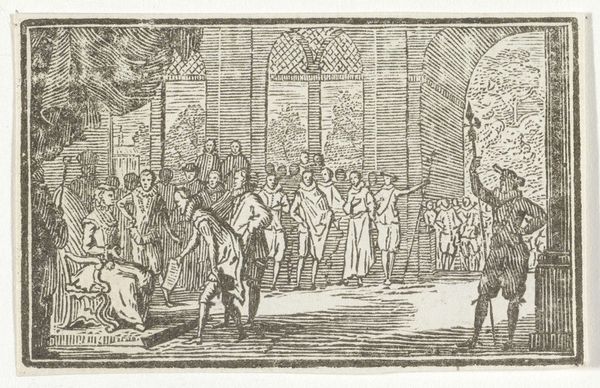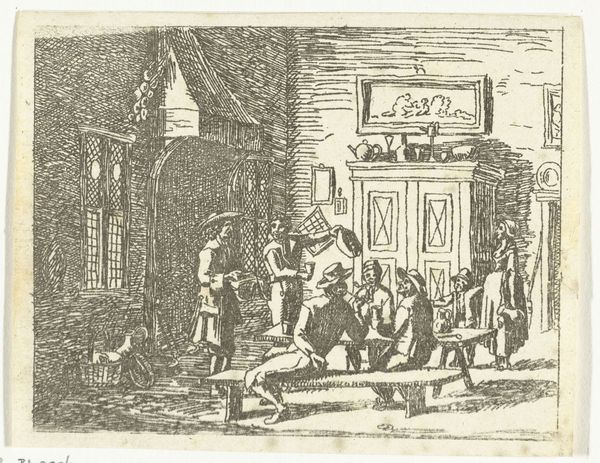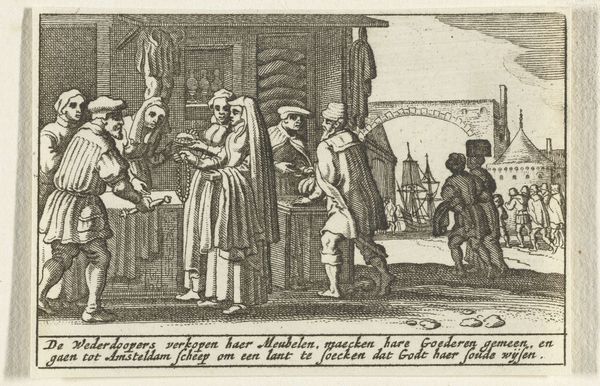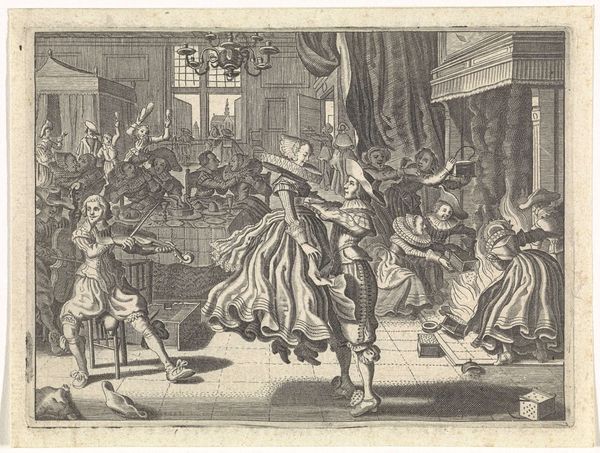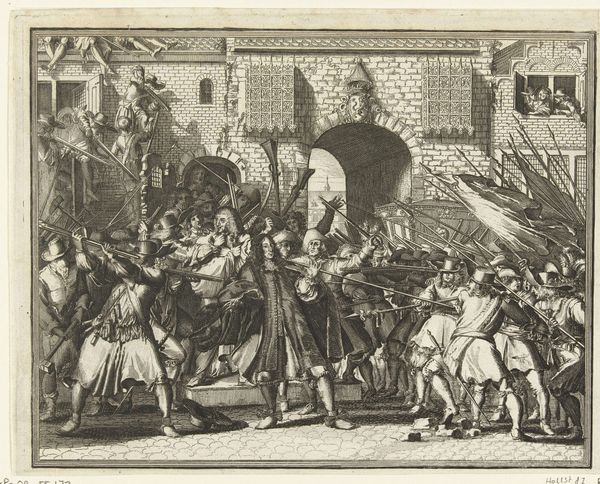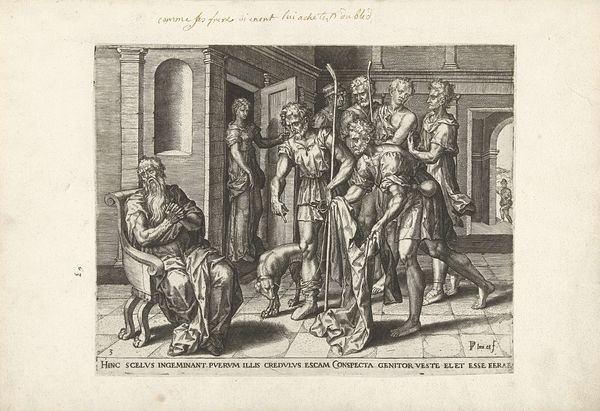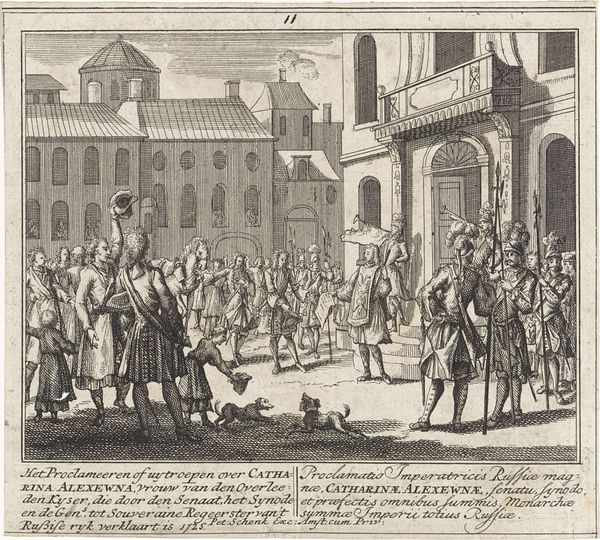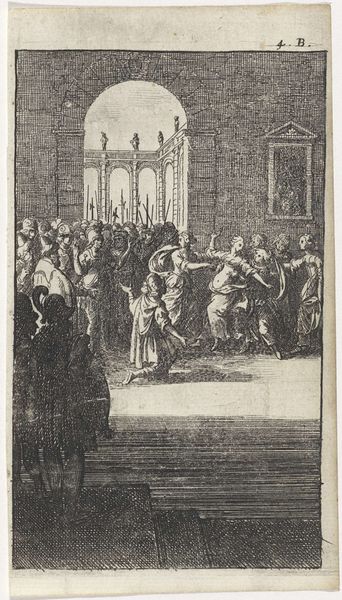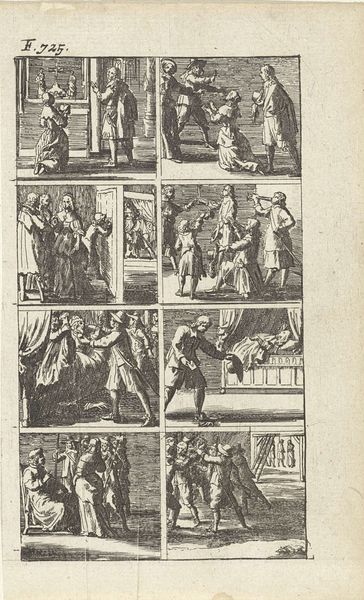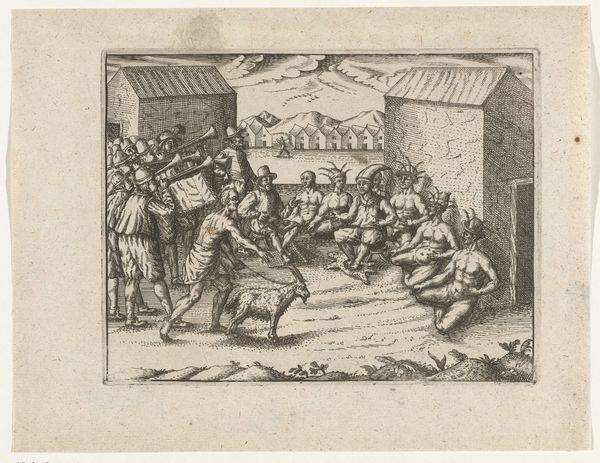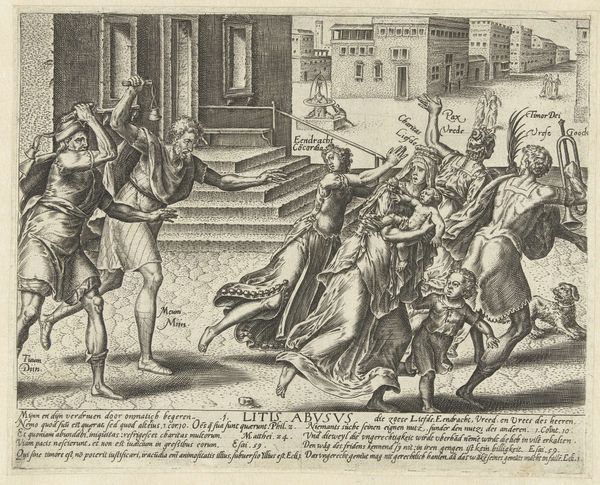
Het aanbieden van het Smeekschrift aan de hertogin van Parma, 1566 1750 - 1899
0:00
0:00
print, engraving
#
narrative-art
# print
#
figuration
#
form
#
line
#
genre-painting
#
history-painting
#
engraving
Dimensions: height 47 mm, width 76 mm
Copyright: Rijks Museum: Open Domain
Editor: This engraving, “Het aanbieden van het Smeekschrift aan de hertogin van Parma, 1566,” is attributed to an anonymous artist and was likely created sometime between 1750 and 1899. I'm immediately struck by the density of line work. It’s so detailed but the almost overwhelming texture dominates the scene. What jumps out to you? Curator: Well, for me, it's the means of production itself. Look at the sheer labor involved in creating this image through engraving! Think about the social context: a print like this allowed for widespread dissemination of a particular narrative, shaping public opinion. Consider who this "anonymous" artist might have been—were they aligned with the supplicants or trying to make some other point through their composition and rendering of details? Editor: That’s a good point. Was this form of inexpensive printmaking influential for the Reformation or other populist movements at the time? Curator: Precisely. These prints democratized images and information. Who had access to this engraving? How was it consumed? Its materiality directly reflects and impacts the social and political landscape of the time, moving ideas of representation from single unique artifacts into mass production. Editor: It's interesting how a piece intended for mass consumption ends up being a unique artifact, now hanging in a museum like the Rijksmuseum. It gives new meaning to ideas of 'high art' when thinking about what something was initially made to be, right? Curator: Exactly! By examining its materials and means of production, we can better understand its function in society. What new ideas about the historical agency of ordinary people does this understanding trigger? Editor: Thinking about the material conditions of production and reception gives a much fuller view of this period of Dutch history than just studying paintings made for wealthy patrons. Thanks for opening my eyes to the context outside of purely aesthetics. Curator: Glad I could offer a new perspective. This helps contextualize how different media forms offer distinct material analyses and arguments.
Comments
No comments
Be the first to comment and join the conversation on the ultimate creative platform.
